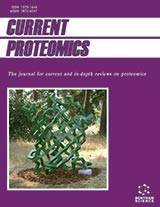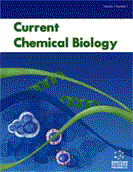Abstract
Diagnosing cancer and identifying the disease gene by using DNA microarray gene expression data are the hot topics in current bioinformatics. This paper is devoted to the latest development in cancer diagnosis and gene selection via statistical machine learning. A support vector machine is firstly introduced for the binary cancer diagnosis. Then, 1-norm support vector machine, doubly regularized support vector machine, adaptive huberized support vector machine and other extensions are presented to improve the performance of gene selection. Lasso, elastic net, partly adaptive elastic net, group lasso, sparse group lasso, adaptive sparse group lasso and other sparse regression methods are also introduced for performing simultaneous binary cancer classification and gene selection. In addition to introducing three strategies for reducing multiclass to binary, methods of directly considering all classes of data in a learning model (multi_class support vector, sparse multinomial regression, adaptive multinomial regression and so on) are presented for performing multiple cancer diagnosis. Limitations and promising directions are also discussed.
Keywords: Cancer diagnosis, gene selection, machine learning, support vector machine, lasso, group lasso.
Graphical Abstract
Current Bioinformatics
Title:Cancer Diagnosis and Disease Gene Identification via Statistical Machine Learning
Volume: 15 Issue: 9
Author(s): Liuyuan Chen*, Juntao Li*Mingming Chang
Affiliation:
- Henan Engineering Laboratory for Big Data Statistical Analysis and Optimal Control, College of Mathematics and Information Science, Henan Normal University, Xinxiang, 453007,China
- Henan Engineering Laboratory for Big Data Statistical Analysis and Optimal Control, College of Mathematics and Information Science, Henan Normal University, Xinxiang, 453007,China
Keywords: Cancer diagnosis, gene selection, machine learning, support vector machine, lasso, group lasso.
Abstract: Diagnosing cancer and identifying the disease gene by using DNA microarray gene expression data are the hot topics in current bioinformatics. This paper is devoted to the latest development in cancer diagnosis and gene selection via statistical machine learning. A support vector machine is firstly introduced for the binary cancer diagnosis. Then, 1-norm support vector machine, doubly regularized support vector machine, adaptive huberized support vector machine and other extensions are presented to improve the performance of gene selection. Lasso, elastic net, partly adaptive elastic net, group lasso, sparse group lasso, adaptive sparse group lasso and other sparse regression methods are also introduced for performing simultaneous binary cancer classification and gene selection. In addition to introducing three strategies for reducing multiclass to binary, methods of directly considering all classes of data in a learning model (multi_class support vector, sparse multinomial regression, adaptive multinomial regression and so on) are presented for performing multiple cancer diagnosis. Limitations and promising directions are also discussed.
Export Options
About this article
Cite this article as:
Chen Liuyuan *, Li Juntao *, Chang Mingming , Cancer Diagnosis and Disease Gene Identification via Statistical Machine Learning, Current Bioinformatics 2020; 15 (9) . https://dx.doi.org/10.2174/1574893615666200207094947
| DOI https://dx.doi.org/10.2174/1574893615666200207094947 |
Print ISSN 1574-8936 |
| Publisher Name Bentham Science Publisher |
Online ISSN 2212-392X |
 20
20
- Author Guidelines
- Bentham Author Support Services (BASS)
- Graphical Abstracts
- Fabricating and Stating False Information
- Research Misconduct
- Post Publication Discussions and Corrections
- Publishing Ethics and Rectitude
- Increase Visibility of Your Article
- Archiving Policies
- Peer Review Workflow
- Order Your Article Before Print
- Promote Your Article
- Manuscript Transfer Facility
- Editorial Policies
- Allegations from Whistleblowers
Related Articles
-
The Synergistic Effects of DNA-Targeted Chemotherapeutics and Histone Deacetylase Inhibitors As Therapeutic Strategies for Cancer Treatment
Current Medicinal Chemistry A Remarkably Faster Approach Towards 1,2,3-Triazolyl Quinolines Via CuAAC in Water: Their Crystal Structure Analysis and Antibacterial Activities
Letters in Drug Design & Discovery Cystic Fibrosis, Vector-Mediated Gene Therapy, and Relevance of Toll-Like Receptors: A Review of Problems, Progress, and Possibilities
Current Gene Therapy Targeting Oncogenes and Tumor Suppressors genes to Mitigate Chemoresistance
Current Cancer Drug Targets Progress in the Discovery of Macrocyclic Histone Deacetylase Inhibitors for the Treatment of Cancer
Current Medicinal Chemistry Discovery of Novel Small Molecule HDAC1, 2, 3 Inhibitors -- Combined Receptor-Based and Ligand-Based Virtual Screening Strategy
Letters in Drug Design & Discovery Cellular Actions of Nesfatin-1 on Hypothalamic and Medullary Neurons
Current Pharmaceutical Design Targeting Heat Shock Proteins 70/90 and Proteasome for Cancer Therapy
Current Medicinal Chemistry A Squamous Cell Gallbladder Carcinoma: A Case Report and Literature Review
New Emirates Medical Journal Drug-Delivery Systems of Green Tea Catechins for Improved Stability and Bioavailability
Current Medicinal Chemistry Role of Epigenetics and Oxidative Stress in Gliomagenesis
CNS & Neurological Disorders - Drug Targets The Preclinical Bases of the Rational Combination of Paclitaxel and Antiangiogenic Drugs
Clinical Cancer Drugs Clinical Utility of Combined 18F-Fluoro-2-deoxyglucose Positron Emission Tomography – Computed Tomography in the Evaluation of Gastrointestinal Malignancies
Current Medical Imaging Regulation of Hepatic Cytochromes P450 by Lipids and Cholesterol
Current Drug Metabolism Privileged Structures as Leads in Medicinal Chemistry
Current Medicinal Chemistry Endoplasmic Reticulum Stress-induced Transcriptional Factor CHOP and Cardiovascular Diseases
Current Hypertension Reviews Control of Tumor Markers Using Nanotechnology
Mini-Reviews in Medicinal Chemistry Inflammatory and Non-Inflammatory Roles for Toll-Like Receptors in Gastrointestinal Cancer
Current Pharmaceutical Design Aging as an Epigenetic Phenomenon
Current Genomics Pharmaceutical Inhibition of Neddylation as Promising Treatments for Various Cancers
Current Topics in Medicinal Chemistry

















.jpeg)








